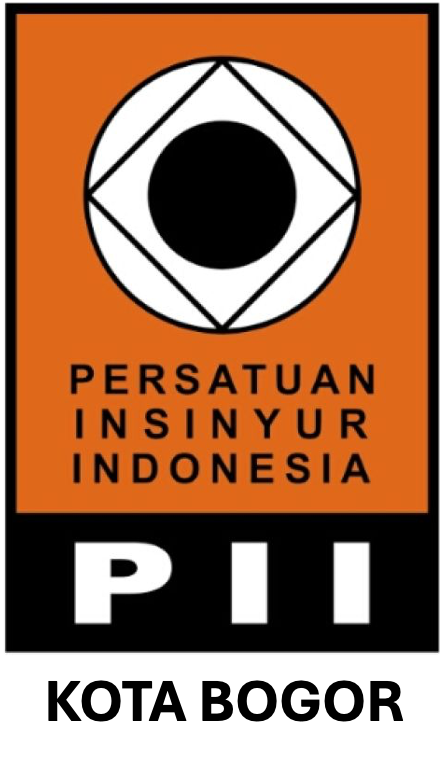Pengembangan Model Jaringan Syaraf Tiruan Untuk Menduga Fluks Gas N2O dari Lahan Sawah
Abstract
Artificial neural networks (ANN) model was used to estimate N2O gas flux emitted from rice paddies with several water regime treatments. The purpose of this study were to identify the relationship of micro-environment with different water regimes towards N2O gas flux, to predict the amount of N2O gas flux, and to validate neural network models. Field experiment was conducted in the field laboratory of Civil and Environmental Engineering-IPB from February to August 2016. Land of paddy was treated with three water regime of continuous flooding water regime, wet water regime, dry water regime. ANN model with back propagation algorithm consisted of input layer with six nodes of micro- environment parameter and N2O gas was used as the model output. The total N2O flux for continuous flooding water regime, wet and dry regime were -25.95 mg/m2/season, 17.32 mg/m2/season, and 21.16 mg/m2/season. ANN each water regime was obtained the coefficient of determination (R2) of was 1, so ANN model was acceptable and could be used to predict N2O flux.
Key words: artificial neural networks, micro environment, N2O gas flux, paddy field
Downloads
References
Adibroto TA. 2011. Iptek Untuk Adaptasi Perubahan Iklim : Kajian Kebutuhan Tema Riset Prioritas. Jakarta (ID): Dewan Riset Nasional.
Arif C. 2013. Optimizing water management in system of rice intensification paddy fields by field monitoring technology [tesis].Tokyo (JP): The University of Tokyo.
Arif C, Masaru M, Setiawan BI, Ryoici D. 2013. Optimizing Water Management of System of Rice Intensification for Climate Change Adaptation Strategy Based on Field Monitored Data. GRENE 2nd workshop, 4-6 March 2013, Baguio, Philippine.
Arif C, Setiawan BI, Widodo S, Rudiyanto, Hasanah NAI, Mizoguchi M. 2015. Pengembangan Model Jaringan Syaraf Tiruan Untuk Menduga Emisi Gas Rumah Kaca Dari Lahan Sawah Dengan Berbagai Rejim Air. Jurnal Irigasi. Vol 10(1):1-10.
[BPS] Badan Pusat Statistik. 2016. Luas Lahan Sawah Menurut Provinsi (ha) tahun 2013 di Indonesia [Internet] [diunduh 2016 Sep 19]. Tersedia pada http://www.bps.go.id/ linkTableDinamis/view/id/895
Gardini F, Antisari LV, Guerzoni ME, Sequl P. 1991. A simple gas chromatographic approach to evaluate CO2 release, N2O evolution, and O2 uptake from soil. Biology Fertil Soils 12(1):1-4.
[IAEA] International Atomic Energy Agency. 1993. Manual on Measurement of Methane and Nitrous Oxide Emission from Agriculture. Vienna (AUT):IAEA.
Makarim AK, Suhartatik E. 2009. Morfologi dan Fisiologi Tanaman Padi. Jurnal Balai Besar Penelitian Tanaman Padi 295-330
Mayumdar D, Kumar S, Kumar U. 2000. Reducing nitrous oxide emission from an irrigated rice field of North India with nitrification inhibitors. Agriculture Ecosystems and Environment. 81(3):163-169.
Minami K, Oshawa A. 1990. Emission of Nitrous Oxide Dissolved in Drainage Water. Soil and the Greenhouse Effect 503-509.
Mosier AR, Duxbury JM, Freney JR, Heinemeyer O, Minami K. 1996. Nitrous oxide emissions from agricultural fields; Assessment. Measurement and mitigation. Plant Soil: 95-108.
Myrold DD. 1999. Transformation of Nitrogen.Principles and Application of Soil Microbiology(Sylvia DM, Jeffry JF, Peter GH, David AZ, editor) New Jersy.Prentice hall.p 259-294.
Nishimura S, Sawamoto T, Akiyama H, Sudo S, Yagi K. 2004. Methane and nitrous oxide emissions from a paddy field with Japanese conventional water management and fertilizer application.Global Biogeochemical Cycles 18:1-10. doi:10.1029/2003GB002207.
Pathak H. 1999. Emission of nitrous oxide from soil. Current Science 77(3) 359- 369.
Patrick WM, Reddy CN. 1978. Chemical changes in rice soils. Journal of IRRI Soil and Rice 361-379.
Rajkishore SK, Doraisamy P, Subramanian KS, Maheswari M. 2013. Methane emission patterns and their associated soil microflora with SRI and conventional systems of rice cultivication in Tamil Nadu, India.Journal of Taiwan Water Conservacy 61:126-134.
Raju SK, Kumar DN, Duck L. 2006. Artificial neural networks and multicriterion analysis for sustainable irrigation planning.Computer and Operation Research 33:1138-1153.
Rao NSS. 1994. Mikroorganisme Tanah dan Pertumbuhan Tanaman. Jakarta (ID): UI-Press.
Sandra, Suroso, Hadi KP, Usman A, Budiastra IW. 2005. Pendugaan Tingkat Ketuaan Manggis secara Non-Destruktif berbasis Citra Digital dan Jaringan Syaraf Tiruan.Jurnal Institut Pertanian Malang Agritek. 13(2):189-197.
Setiawan BI, Irmansyah A, Arif C, Watanabe T, Mizoguchi M, Kato H. 2013. Effect of Groundwater Level on CH4 and N2O Emissions under SRI Paddy Manangement in Indonesia.Journal of Taiwan Water Conservacy 61:135- 146.
Setyanto, Prihasto. 2004. Mitigasi gas metan dari lahan sawah, Tanah Sawahdan Teknologi Pengelolaannya.Bogor (ID): Pusat Penelitian dan Pengembangan Tanah dan Agroklimat.
Shrestha RK, Ladha JK. 1998. Nitrogen dynamics in intensive rainfed lowland rice based cropping systems and strate-gies to improve efficiency. Rainfed Lowland Rice 95-108.
Siang JJ. 2005. Jaringan Syaraf Tiruan dan Pemogramannnya Menggunakan Matlab. Yogyakarta (ID): Andi Offset.
Snyder CS, Bruulsema TW, Jensen TL. 2007. Best Management Practices to Minimize Greenhouse Gas Emissions Associated with Fertilizer Use. Better crops 19:16-18.
Subrata, Made ID, Suroso, Dwinanto. 2001. Penerapan Teknologi Image Processing dan Artificial Neural Network untuk menduga ketersediaan air dan nutrisi pada pertumbuhan tanaman cabai merah. Buletin Keteknikan Pertanian. 15(2):80-88.
Sujono J. 2011. Koefisien Tanaman Padi Sawah pada Sistem Irigasi Hemat Air. Jurnal Agritech. 31 (4):344-351.
Suprayogi, Slamet, Setiawan BI, Suroso. 2004. Estimasi Evapotranspirasi Potensial menggunakan Jaringan Syaraf Tiruan.Majalah Geografi Indonesia. Vol 18(1):31-42.
Suprihati .2007.Populasi Mikroba dan Fluks Metana (CH4) serta Nitrous Oksida (N2O) pada Tanah Sawah :Pengaruh Pengelolaan Air, Bahan Organik dan Pupuk Nitrogen. [disertasi].Bogor (ID):Institut Pertanian Bogor.
Suroso, Fadlilah M. 2003. Evaluasi Mutu Ketimun Jepang (Cucumis sativus L.) Berdasarkan Bentuk dengan Perceptron. Buletin Keteknikan Pertanian. 17(2):14-21.
Tamrin KB, Suhardiyanto H, Hardjoamidjodjo S. 2005. Model Jaringan Syaraf Tiruan untuk Pertumbuhan Tanaman Ketimun Mini (Cucumis sativus L. Var. Maria) pada Fase Vegetatif. Jurnal Keteknikan Pertanian. 19 (1):1-10.
Tyagi L, Kumari B, Singh SN. 2010. Water management – A tool for methane mitigation from irrigation paddy fields. Sci Total Environ 408:1085-1090.
Wihardjaka A. 2007 . Pengelolaan Lahan Sawah Tadah Hujan Dalam Menekan Emisi Gas Nitro-Oksida. Jurnal Sumber Daya Lahan 1(3):1-9.
Wrage N, Veltho GL, Van Beusichem ML, Oenema O. 2001. Role of nitrifierin the production of nitrous oxide. Soil Biology and Biochemestery 33:1723- 1733.
Authors who publish with Jurnal Teknik Sipil dan Lingkungan, JSIL agree to the following terms:
a. Authors retain copyright and grant the journal right of first publication with the work simultaneously licensed under a Creative Commons Attribution License that allows others to share the work with an acknowledgment of the work's authorship and initial publication in this journal.
b. Authors are able to enter into separate, additional contractual arrangements for the non-exclusive distribution of the journal's published version of the work (e.g., post it to an institutional repository or publish it in a book), with an acknowledgment of its initial publication in this journal.
c. Authors are permitted and encouraged to post their work online (e.g., in institutional repositories or on their website) prior to and during the submission process, as it can lead to productive exchanges, as well as earlier and greater citation of published work (See The Effect of Open Access).











